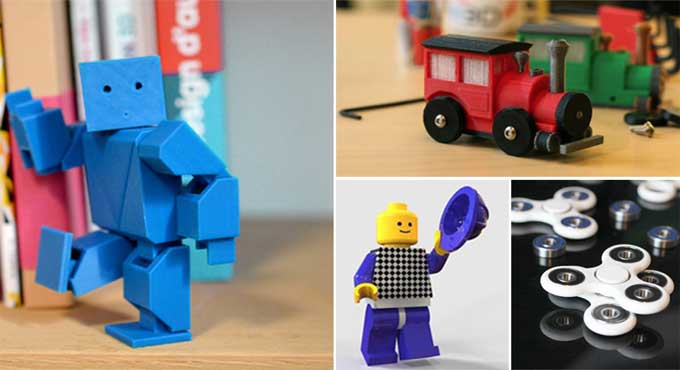What role does 3D Modelling play in the Toy Industry?

The design of a toy should not need to be adjusted after it is finalized, and production should begin immediately. There was not just one day it took for those colorful and engaging toys you see in physical stores and online catalogs to take shape. Before becoming cherished items loved by children and adults alike, they have gone through a rigorous refinement and modification process.
Due to this, manufacturing 3D printing services have become an invaluable tool in the toy industry, facilitating product development with greater efficiency and creative freedom. Toy projects today rely heavily on 3D models to streamline workflows and increase efficiency. Bringing your toys to store shelves in a timely manner is increasingly important in today's fast paced world, where trends shift quickly.
Importance of Technology in Toy Industry
Technology has influenced the toy industry as well as all other sectors. Creating prototypes and modifying molds used to take a lot of time and money in the past. As a result of the advent of 3D technology, however, many changes have taken place.
Toy designers and developers have been transformed by cutting edge technology like 3D Modeling. By utilizing this technology, companies can quickly create cost effective 3D models and prototypes, assisting in the testing and preparing of realistic toys for sale.
Define 3D Modeling
Various stages of art creation culminate in the captivating 3D art you see today, including 3D modeling. Three-dimensional objects are created using specialized software in this phase. In 3D modeling, an object is represented in three dimensions using special software. The textures, shapes, and sizes of these 3D models are effectively conveyed.
In 3D modeling, artists can create models of existing products and conceptual designs that have yet to be realized physically. An expert in 3D modeling plots points on a Cartesian plane to represent depth, forming a digital framework. The artist can manipulate and adjust polygons to achieve the desired form and look of the object within this framework.
3D Modeling & 3D Prototypes Roles in Toy Industry
The potential of 3D printing for the toy industry could not be the first technical innovation that springs to mind. However, 3D models and prototypes offer a number of benefits in today's consumer driven market where toy manufacturers struggle to acquire and maintain a competitive edge. These advantages include more design customizability, a quicker time to market, and the chance to develop novel business models.
3D printing businesses are now crucial partners for contemporary toy producers looking to keep up with market trends and satisfy consumer wants. In addition to fostering design inventiveness, which is a highly prized asset in the toy sector, 3D modeling streamlines and speeds the manufacturing process for developing toys, which eventually lowers prices. The emergence of the digital age has further fueled the growing need for 3D technology, accelerating the pace of development in this area.
In the modern day, toy patterns are developed and perfected digitally, providing unmatched versatility and the freedom to change designs. Toy conception, design, and marketing are all changed by the mix of creativity and efficiency made possible by 3D modeling.
Wrapping it Up
By using 3D modelling and prototyping, the toy industry has become more efficient, creative, and safe. By using 3D technology, toy designers and manufacturers can quickly and costs effectively create realistic prototypes, facilitating the testing and refinement of new concepts. By using 3D models, communication is improved, data is managed efficiently, and design revisions are streamlined.
To learn more, watch the following video tutorial.
Video Source: Pixologic ZBrush
The technology enables toymakers to engage with their customers and deliver innovative educational toys, including child friendly 3D printers that promote engineering and science literacy. It is easier to balance functionality and creativity with 3D prototyping while ensuring the safety of children.
Utilizing 3D modelling capabilities and implementing Continuous Improvement processes, the toy industry is enabling new opportunities for innovation and success, all while ensuring high standards of safety and quality.



